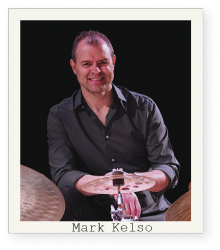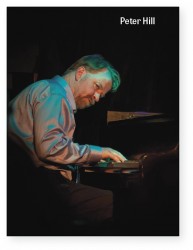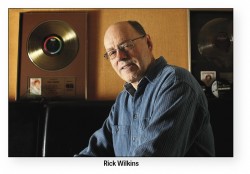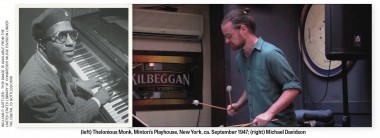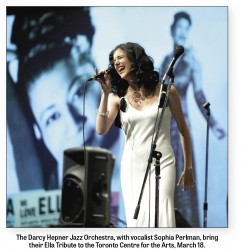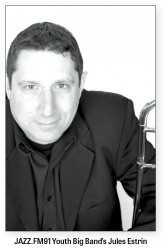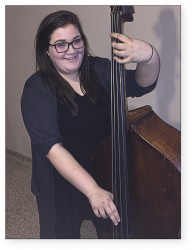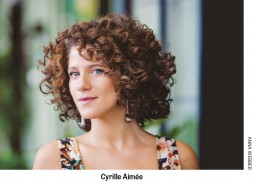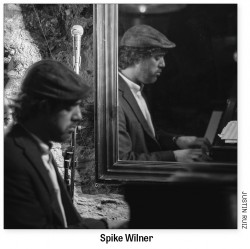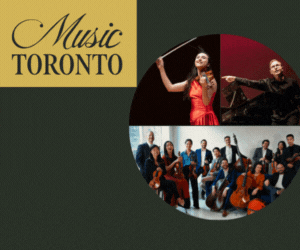A YORKVILLE STATE OF JAZZ
You’ll notice that this year, there are overall far fewer listings for the TD Toronto Jazz Festival, June 23 to July 2. This year, with a few exceptions, all events will take place in and around Yorkville.
In achieving this intensification and scaling back, Toronto Jazz has almost completely eliminated the club series (although according to director of operations Patti Marshall the festival may wish to work again with the clubs in future). Maybe, for now, it’s a good thing – quantity does not always mean quality. And after all, a few generations ago the historic Yorkville neighbourhood was a true “music hub” in this “music city” of ours.
As this magazine goes to print, 50 years have passed since the then infamous May 1967 “love-in” was held, a stoner’s throw away from Yorkville at Queen’s Park. Back then Yorkville was a mecca of art, with legendary artists performing regularly at coffee houses like The Riverboat, Penny Farthing and The Purple Onion. Following decades of developers and lucrative land deals, today there is hardly any live music in the affluent area (a shout-out to The Pilot for being the enduring exception to the rule).
So here is hoping the festival creates some buzz to bring it back. But this cannot happen without YOU! That’s right, you, WholeNote reader. More than anyone I know, you are likely to spread the word about the fact that in addition to two quality mainstages (at Koerner Hall and the newly re-opened Concert Hall), this festival will have over 100 free shows that will be happening.
I wanted to highlight a handful of these daytime performances, so I hunted down eight of the artists who will be appearing in them. To read the full interview with each artist, see this article online, where in addition to the “where, what and when” summer information included here they each recall a “most memorable summer musical festival moment.”
Mon Jun 26 8:00pm, OLG Stage on Hazelton Ave.
Mark Kelso (drums); Jeremy Ledbetter (keys); Luis Deniz (sax); Joey Martel (guitar).
Other summer gigs? “With the Jazz Exiles, the Rochester Jazz fest and the South Coast Jazz fest. Various other festivals with Natalie MacMaster and Donnell Leahy.”
Most memorable: Rochester jazz fest with Soul Stew and 3000 dancing patrons going crazy.
Joy Lapps Project
Fri Jun 30 2:30pm, OLG Stage on Cumberland St.
Joy Lapps (steel pan); Andrew Stewart (bass); Elmer Ferrer (guitar); Michael Shand (keys); Larnell Lewis (drums).
Other summer gigs? “I’ll be performing a special show as a part of the Newmarket Jazz Festival on August 17. For that show, I’ll be playing with this same quintet opening for my hubby Larnell… We basically have the same band, because he stole my band and then added horns…. lol. But when you’re married you share everything 50/50. Plus we all love to play together so it’s kind of nice that the group gets to create together in difference musical situations. It makes for amazing chemistry and lots of running jokes.
You can find us at the Toronto Pearson Street Festival on June 17th. So far I know Michael and Larnell will join me for this date.
And it’s not a festival, but on June 3 I will join Professor Karen Burke and Toronto Mass for Gospel Island Grooves at Humber College.”
Most memorable: My most memorable performance at a music festival was at Antigua's Moods of Pan Festival. There's nothing like playing on the island your parents called home on a warm November Sunday (yep WARM NOVEMBER) afternoon. As a first generation Canadian born to Antiguan parents, it was an honour to connect with the audience both with my music and by paying tribute to the music of King Short Shirt, one of the island's great calypsonians.
 Joel Visentin’s Boogaloo Squad
Joel Visentin’s Boogaloo Squad
Sun Jul 2 2:30pm, OLG Stage on Cumberland St.
Joel Visentin (Hammon B3); Adam Beer-Colacino (guitar); Jeff Halischuk (drums).
Other summer gigs? “I’ve got a really exciting summer ahead of me with a few different projects. I’m the regular pianist with Barbra Lica and she’s playing a bunch of festivals this summer including the Vancouver, Victoria, Edmonton, Markham, Waterloo, Niagara and Rochester Jazz Festivals. I also play keyboards in a band called Bros which is a really fun band fronted by 2 members of the rock band The Sheepdogs. We’re playing the CBC music festival, Festival D’Ete in Quebec City and the Evolve music festival in the Maritimes. Also I play regularly with a great Canadian blues guitarist Jack Dekeyzer and we’ll be doing a handful of blues festivals this summer including Mont Tremblant in Quebec.”
Most memorable: The first that comes to mind right now is when I went to Japan with Barbra Lica to play at the Tokyo Jazz Festival. I had never been to Japan before and it’s an amazing country with amazing food and some of the world’s most devoted jazz lovers.
Stacie McGregor
Wed Jun 28 1:00pm, Yorkville Village - The Oval
Stacie McGregor (solo piano)
“Other summer festivals /outdoor gigs: I will be performing with John MacMurchy’s Art of Breath, July 1, 4:00, OLG stage Yorkville as part of the Toronto Jazz Festival. Also, I will finally be performing with the New Kollage at the rooftop garden of Princess Margaret Hospital on Friday July 21 noon-1:30pm as part of the summer Friday music series to help give relief and joy to the patients, the staff and the general public. Cost is free. This is a concert that’s been a long time coming. Featuring Archie Alleyne’s young protégé Isaiah Gibbons on drums.
Kollage will also be doing its first recording in years on the G-Three label this summer. I will also be recording a new album with Henry Heillig’s Heillig Manoeuvre this summer and am very excited about that too!”
Most memorable: Most memorable performance hands down was performing with my band The Stacie McGregor Quartet at the Montreal Jazz Festival on the main stage and was my first performance for the festival.We performed on the July long weekend at 6pm after they had 'Pied Pipered" all these enthusiastic fans to a new orleans jazz ensemble up the main strip..The street was jammed. the seats ,packed and the crowd enthusiastic...it was surreal..like a large rock concert..and the band delivered..!
John MacMurchy’s Art of Breath
Sat Jul 1 4:00pm, OLG Stage on Hazelton Ave.
John MacMurchy (reeds); Bruce Cassidy (EVI/flugelhorn); Dan Ionescu (guitar); Stacie McGregor (piano); Ross MacIntyre (bass); Daniel Barnes (drums); Alan Hetherington (hand percussion).
Other summer gigs? “I hope to be part of the Kensington Market Jazz Festival in September. Other than that, I’m performing in the Toronto fest with Alex Pangman on June 24 at The Rex, and at the Yorkville stage with Alex on the 25th. On June 23 I’m performing with my trio and featuring the remarkable Jocelyn Barth on vocals at the Library Series in Thornbury, Ontario. My trio will be at 120 Diner on June 30th featuring Jessica Lalonde on vocals. There’s a theme here - I like working with singers. I’m also doing a show with Alex Pangman in Ann Arbor, Michigan, in July.”
Most memorable: My most memorable performance to date at a festival was at the Toronto Festival Mainstage in 2010. I performed with Jim Galloway and Friends and it was memorable in a few different ways. First, the G20 meeting - and protests - were going on in town and attendance was affected by the police presence. Second, it included a stellar performance from Ian Barghe on piano and it was the last time I played with him as he passed away not long after. Third, and most importantly, the band played marvellously. everyone was at the top of their game as we played lots of Duke Ellington, Billy Strayhorn, and Jimmie Lunceford and yet there was hardly anyone there. This has happened before where the best performances are to small and intimate audiences.
Brian Barlow Big Band w/ Heather Bambrick Celebrating Ella
Thu Jun 29 12:00pm, OLG Stage on Cumberland St.
“Heather Bambrick and Friends Series at Home Smith Bar (ticketed) features Russ Little Quartet: Russ Little (trombone); Tom Szczesniak (piano); Scott Alexander (bass); Brian Barlow (drums), and guests June Garber (June 23); Shakura S’Aida (June 24); Amanda Martinez (June 30); Micah Barnes (July 1). All shows 7:30pm, $35.50 + service charge.
Other summer gigs? “Well, first things first: I’m making my debut with the Toronto Symphony Orchestra at the beginning of June, as a part of their special CA-NA-DA! show. It may not be a festival, but I’m pretty darned excited about it!! Then, in July, I’m bringing my trio to Sunfest in London, and my Quartet to the Royal Botanical Gardens in Burlington for their Jazz and Blues series. I’ll be joining Mark Fewer and David Braid for a unique show as part of the Toronto Summer Music Festival on July 20th. This is usually a Classical series, but Mark (who is a brilliant violinist / composer) is mixing it up a bit this year and has asked me to join him. It’s going to be very interesting and exciting! In August, I’ll be with the Brian Barlow Big Band in Picton for the Prince Edward County Jazz Festival. I still consider September festival season, so I’ll be heading north to Sudbury for the Jazz Festival there, and then back with the Barlow Big Band for another Ella tribute, this time at the Capitol Theatre in Port Hope.”
Most memorable: I think the most memorable experience was in St. John’s, Newfoundland, during the East Coast Music Awards. I was nominated for an ECMA, and was invited to perform (as part of the weekend's programming) with a couple of my Toronto bandmates (Micheal McClennan and Chase Sanborn), as well as some local musicians (Bill Brennan and Scott Mansfield). We were at the end of our set in a packed room and I finished with my arrangement of the Newfoundland folk song “Let Me Fish Off Cape St. Mary’s”. This is often referred to as the unofficial anthem of Newfoundland, and you could hear a faint collective humming from the audience as I started singing the first few verses of the tune. I knew people wanted to join in, so after Bill played a stunning piano solo, instead of singing the final verse a cappella, I put down my microphone and invited the audience to "take it". Every Newfoundlander in the crowd began to sing in unison, and the room was absolutely lifted by the power of their voices and the pride in their hearts. I don’t remember ever having such a special moment in a performance! I was so full of love for, and pride in, my fellow Newfoundlanders that night!!
Eric St-Laurent Sextet (with Michel DeQuevedo, interviewed)
Sun Jun 25 8:30pm, OLG Stage on Cumberland St.
Eric St-Laurent (electric guitar); Jordan O’Connor (bass); Attila Fias (piano); Anh Phung (flute); Michel DeQuevedo (percussion) plus a special guest.
“This summer I am focusing on getting my album and myself ready so I will not be doing much travelling. Instead I am working on getting gigs around the city either with a full band or as a solo show to gain confidence and strength as a front man.”
Most memorable: This is a hard one, I have been lucky to participate in a lot of festivals with so many great musicians, not only in Canada but also in Mexico, where I am from and many other countries.
Probably the most memorable was at a festival called “Rock al Parque” (Rock to the Park) in Bogota, Colombia with a band from Mexico City called “La Lupita”.
150,000 people were ready to party with us but everybody kept pushing forward so the people in the from lines were starting to faint and have trouble breathing and moving, at that point our lead singer said “ok everyone, we are having some issues at the front so, before we start I want to ask you all to take 3 steps back” Almost immediately we witnessed that huge mass of people moving backwards together, in unity. That image, the sound it made and the enormous cheer that came afterwards have been in my memory since then and will stay there forever.
Joanna Majoko Quintet
Sat Jul 1 5:30pm, OLG Stage on Cumberland St.
Joanna Majoko (vocals); David Restivo (piano); Jocelyn Gould (guitar); Mark Godfrey (bass); Ian Wright (drums).
“I will be performing with Jane Bunnett and Maqueque at the Montreal Jazz Festival just four days after my show in the Toronto Jazz Festival.”
Most memorable: My most memorable performance took place in Paris, France, in October of 2015, performing with the Otis Brown III Quartet at one of the most well-known jazz clubs, Duc Des Lombards. It was my first international gig and more so, I was performing with someone who happens to be one of my musical heroes - I had followed his career from his time performing with Esperanza Spalding, to Joe Lavona, to Somi and finally his own music. It was a dream come true performing on a stage that so many jazz legends had stood on (a rather small stage to my surprise), but it unleashed a fire inside me that has driven me in all my successes that have followed.
One final high note: the festival this year has brought back the late-night jam sessions, which will be happening nightly 10pm at Proof Vodka Bar at the Intercontinental Yorkville Hotel. On June 30 the house band will be the Berklee Global Jazz Institute Ensemble; on all other nights the rhythm section will be a faculty trio from Humber College: Robi Botos on keys, Mike Downes on bass and Fabio Ragnelli on drums. To quote “Over the Rainbow,” that’s where you’ll fiiiiiind me, and hopefully lots of other jazz musicians from this town and beyond. There is no cover charge for these jam sessions, so no excuses! Represent!
Wishing you all the hottest music and cool sounds you can muster this summer!
Ori Dagan is a Toronto-based jazz musician, writer and educator who can be reached at oridagan.com.


